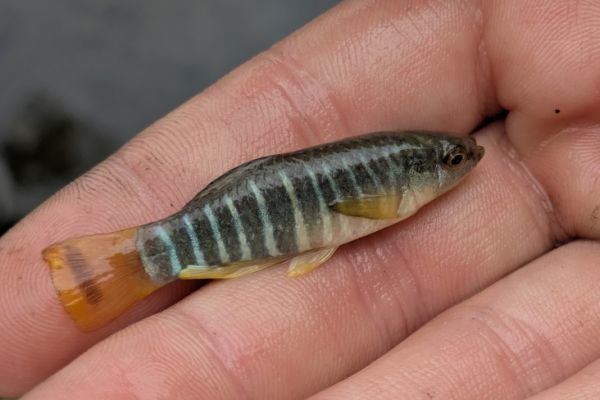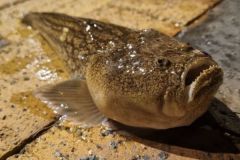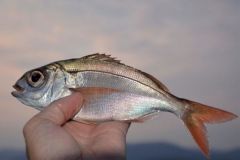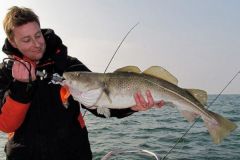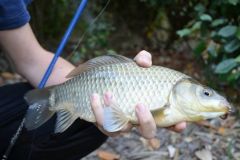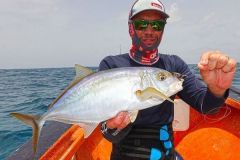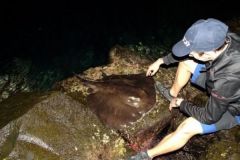The Corsican aphanius is a small, discreet fish that lives in brackish waters and lagoons. Although called aphanius or cyprinodonte de Corse, it is found throughout the Mediterranean.
It is very present in Corsica, where its habitats (marshy areas, salt marshes, lagoons, estuaries, etc.) remain relatively unspoiled. It does not live at sea and is considered a freshwater fish.
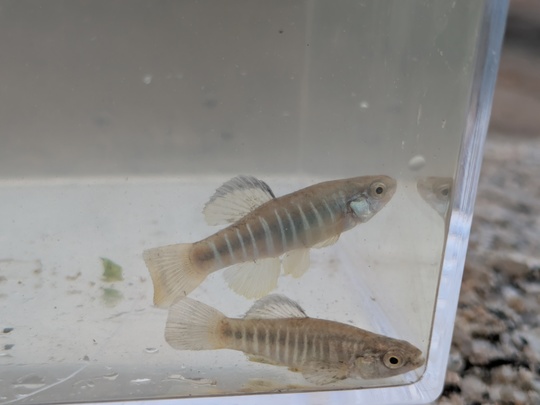
The drying up of its habitats and competition with other species explain the decline in certain populations.
Its Latin name is aphanius fasciatus. It is a member of the killis family, well known to aquarists.
How to recognize it?
The Corsican Aphanius has a fairly compact, cylindrical shape. Its head is slightly flattened. Its fins are large for its size and rounded. Its mouth faces upwards.
Its size hardly exceeds 5 cm.
Females and males have very distinct coats.
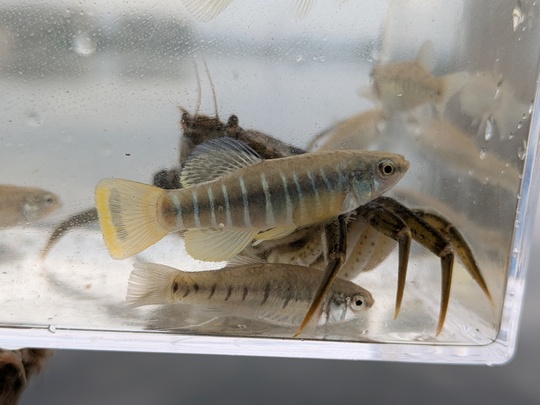
The male has 10 to 12 dark vertical stripes on a light blue iridescent background. Its fins and belly are predominantly yellow, while its back is steel gray.
Females are duller, with less contrast and color in shades of gray. They have only a few dark gray lines on their flanks.
Corsican aphanius customs
Aphanius live in small schools, often consisting of one male and several females. They can be found along riverbanks or near seaweed beds. Not to be confused with gambusias or atherines, which sometimes share the same habitat.
They live in shallow waters and hunt small larvae.
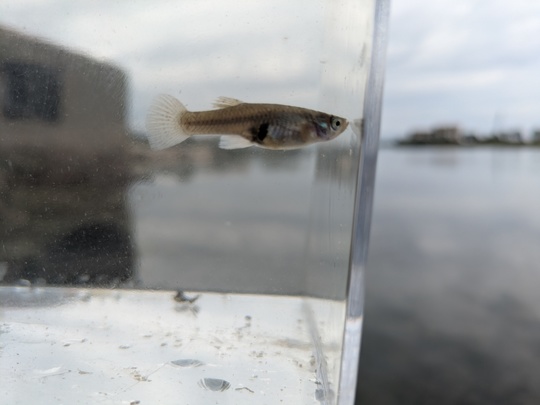
The Corsican aphanius is oviparous and its eggs are buried in the mud.
Even if this fish is quite coveted by aquarists, it's customary to remember that keeping wild species and aphanius is strictly forbidden.
The Corsican aphanius is very hardy and can live in almost extreme conditions, in poorly oxygenated water at high temperatures (sometimes over 35°C).

 /
/ 